After tooling around Lake Mills, Wisconsin, for a few hours, we got around to the original reason for driving up to southern Wisconsin for the day, a visit to Aztalan State Park. The park is a few miles east of the town, occupying 172 acres near the banks of the Crawfish River.
It’s a small version of Cahokia in Illinois, near modern-day St. Louis. The comparison isn’t idle, since both settlements were created and occupied by Middle Mississippian Indians more than 1,000 years ago.
Like Cahokia, Aztalan features manmade mounds and a rich archaeological legacy, despite 19th-century depredations. The Indians at Aztalan similarly and mysteriously abandoned it like those at Cahokia, centuries before the coming of Europeans.
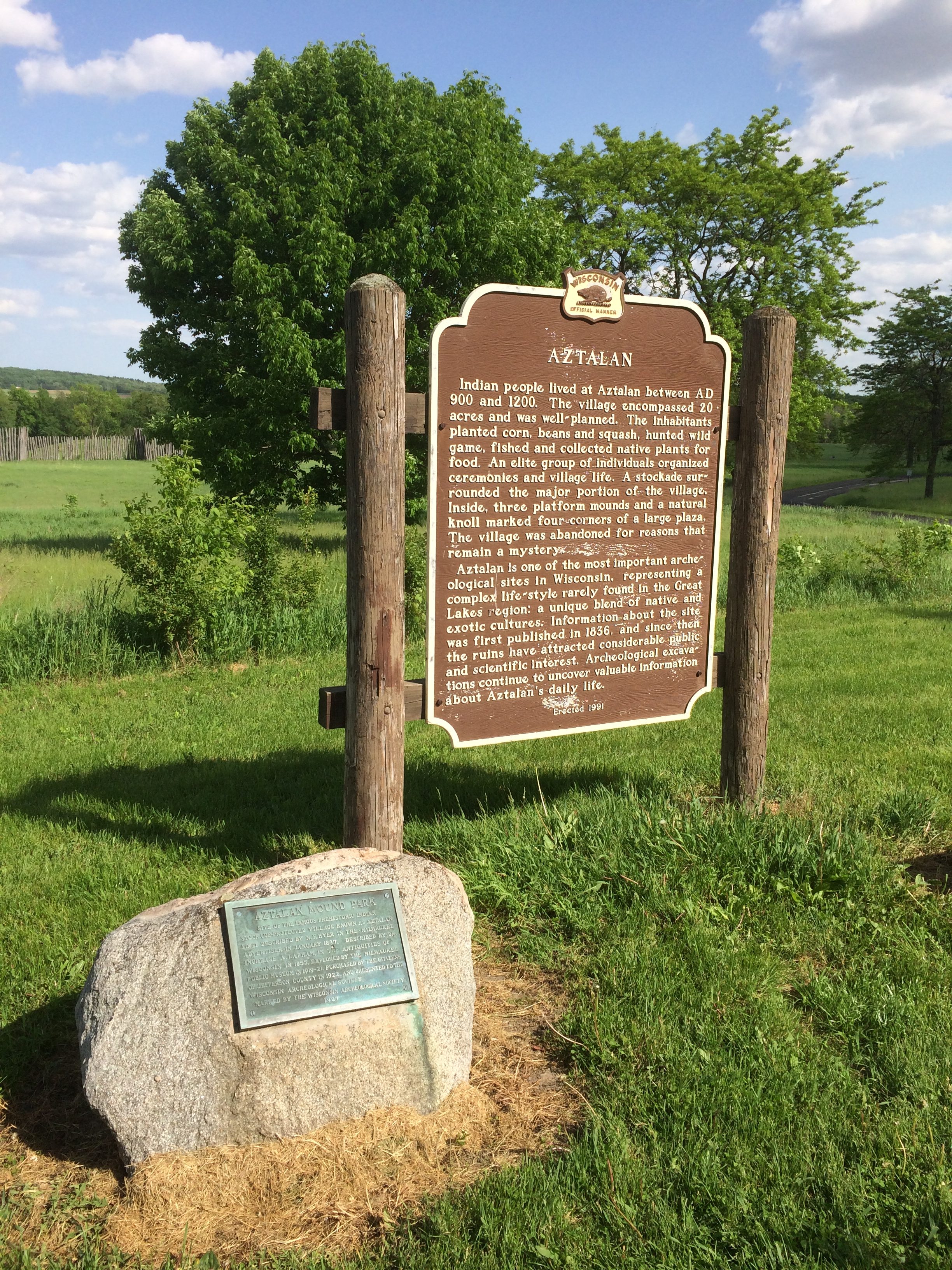 The name is a misnomer in the sense that in the 19th century, one of the ideas about the prehistoric people who lived here saw them as ancestors of the Aztecs. The ancestors of the Aztecs were thought to be from a place north of Mexico called Aztalan. So the name was applied to the site, even though the Mississippians are no longer believed to be Aztec ancestors.
The name is a misnomer in the sense that in the 19th century, one of the ideas about the prehistoric people who lived here saw them as ancestors of the Aztecs. The ancestors of the Aztecs were thought to be from a place north of Mexico called Aztalan. So the name was applied to the site, even though the Mississippians are no longer believed to be Aztec ancestors.
Then again, what the people who lived here actually called their settlement is unknown. I’d speculate that it was some variation of Our Place or This Here Place in their language, but who knows. Aztalan is as good a name as any in our time.
But why did they settle in the future Wisconsin? The Milwaukee Public Museum posits: “Things such as copper, lead (for white paint), deer, and certain types of stone materials such as Hixton Silicified Sandstone, were the basis of Mississippian trade interests in the northern frontier, and may have influenced the location of Aztalan as a Mississippian outpost in Wisconsin. Trade and other social and political processes expanded Cahokian influence out into much of the Midwest, as well as eastern and southeastern North America.”
Aztalan State Park sports tall grass, mounds and stockade posts, with mowed paths connecting different areas.
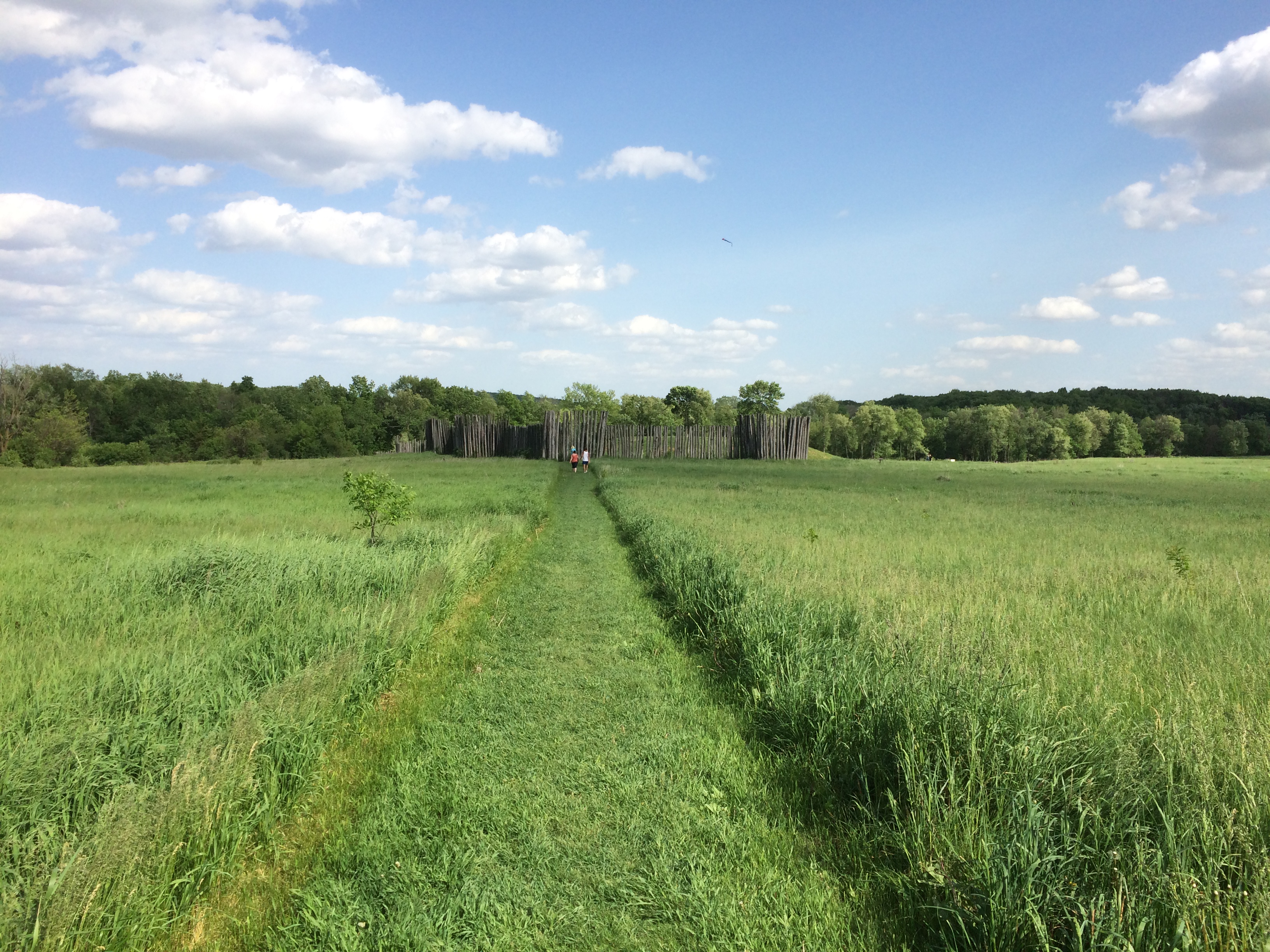
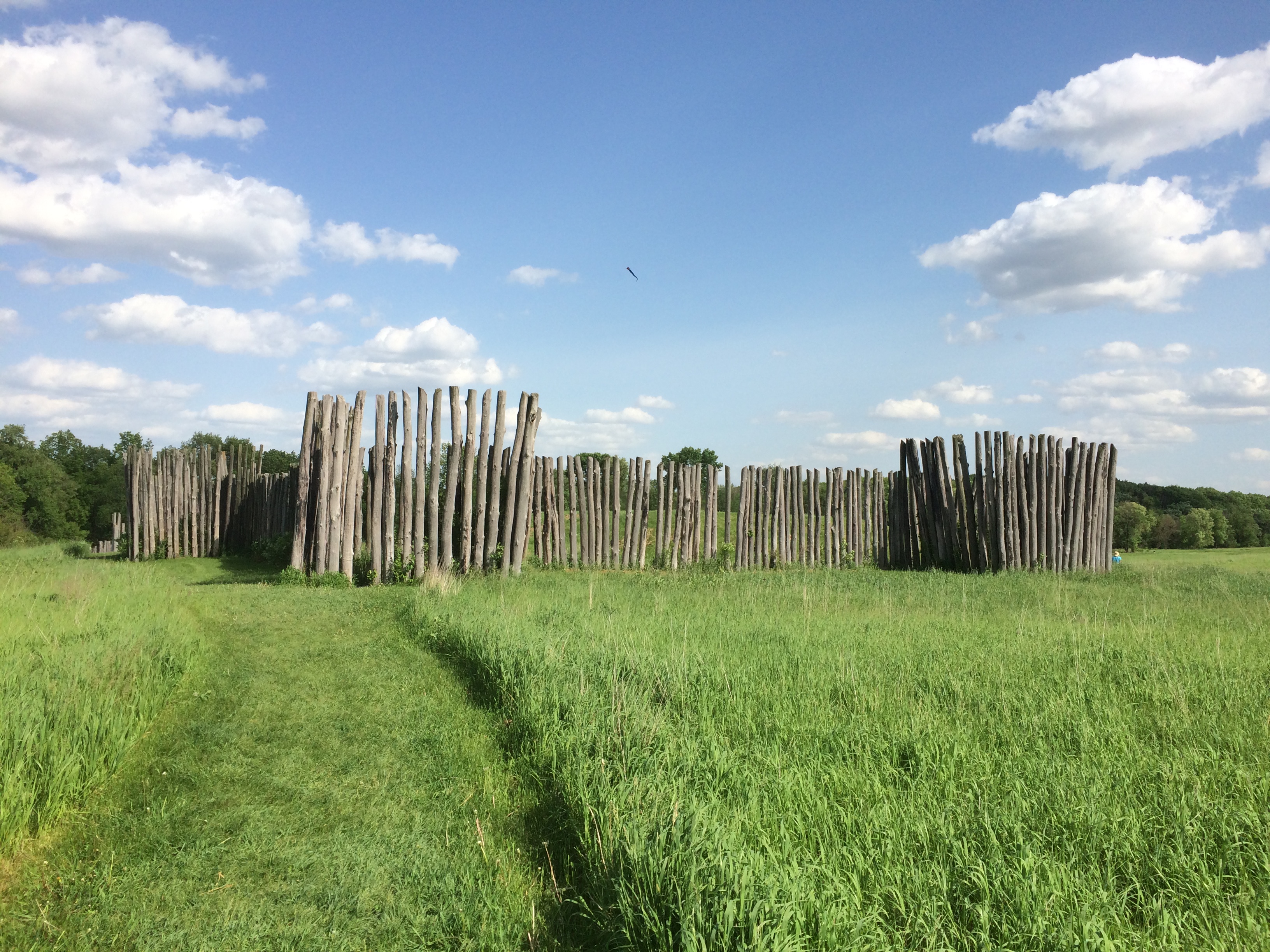 The stockade posts are 20th-century reconstructions, but I understand they were placed in the original holes.
The stockade posts are 20th-century reconstructions, but I understand they were placed in the original holes.
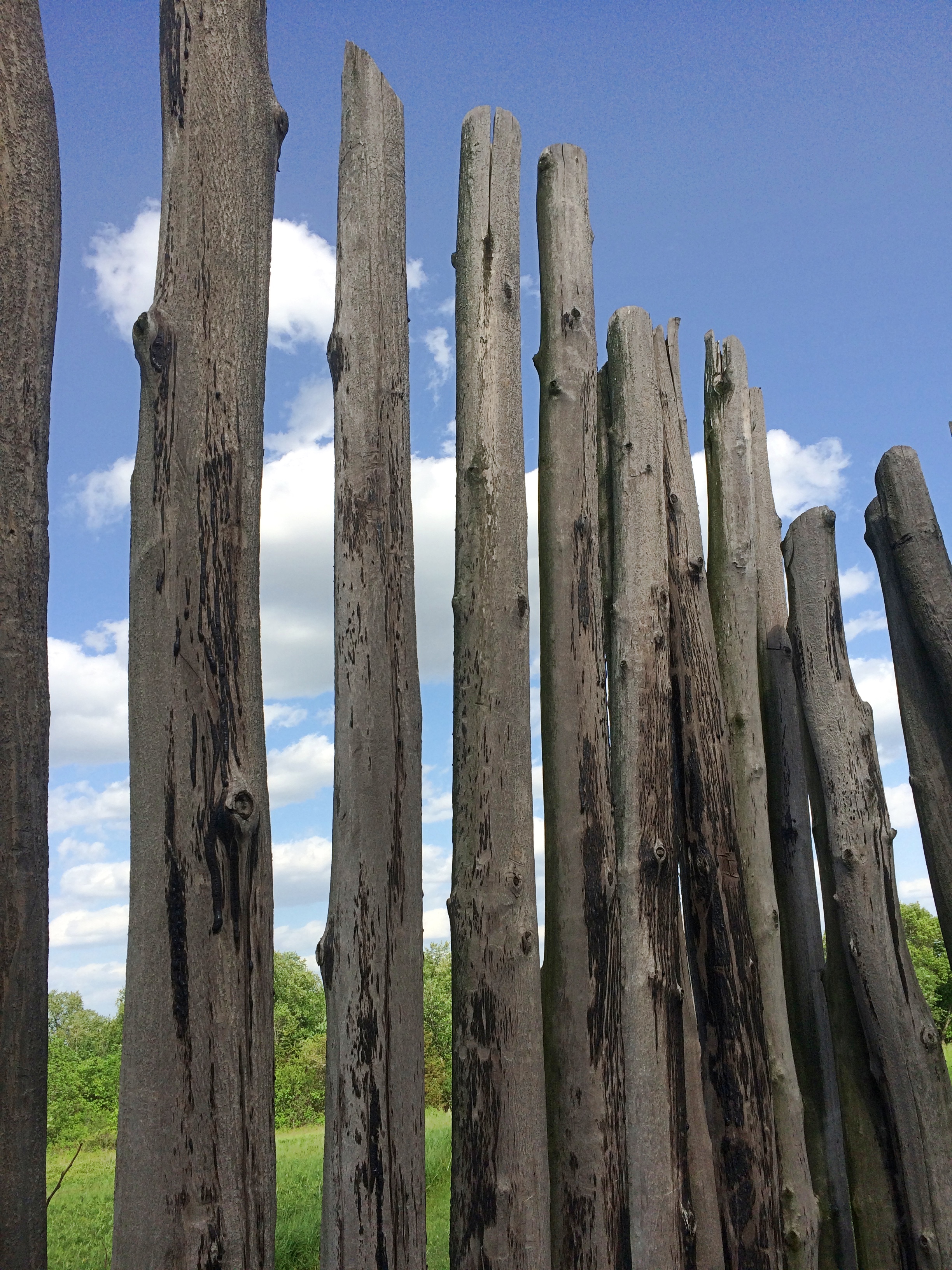 One of the mounds. The second largest one, I think.
One of the mounds. The second largest one, I think.
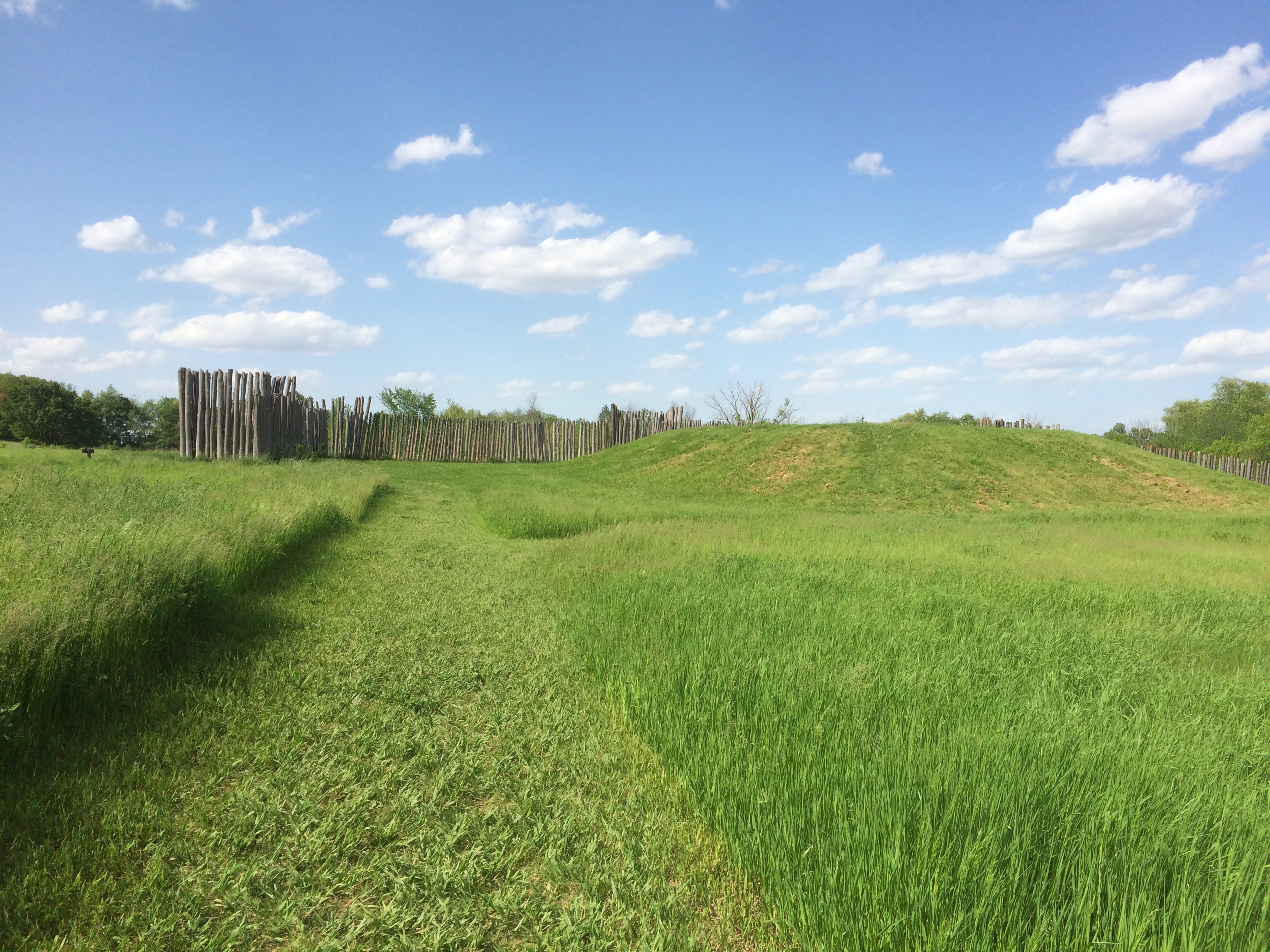 The path to the largest of the mounds. Large and small are relative terms for the mounds at Aztalan. Compared with Cahokia, they’re all pretty small.
The path to the largest of the mounds. Large and small are relative terms for the mounds at Aztalan. Compared with Cahokia, they’re all pretty small.
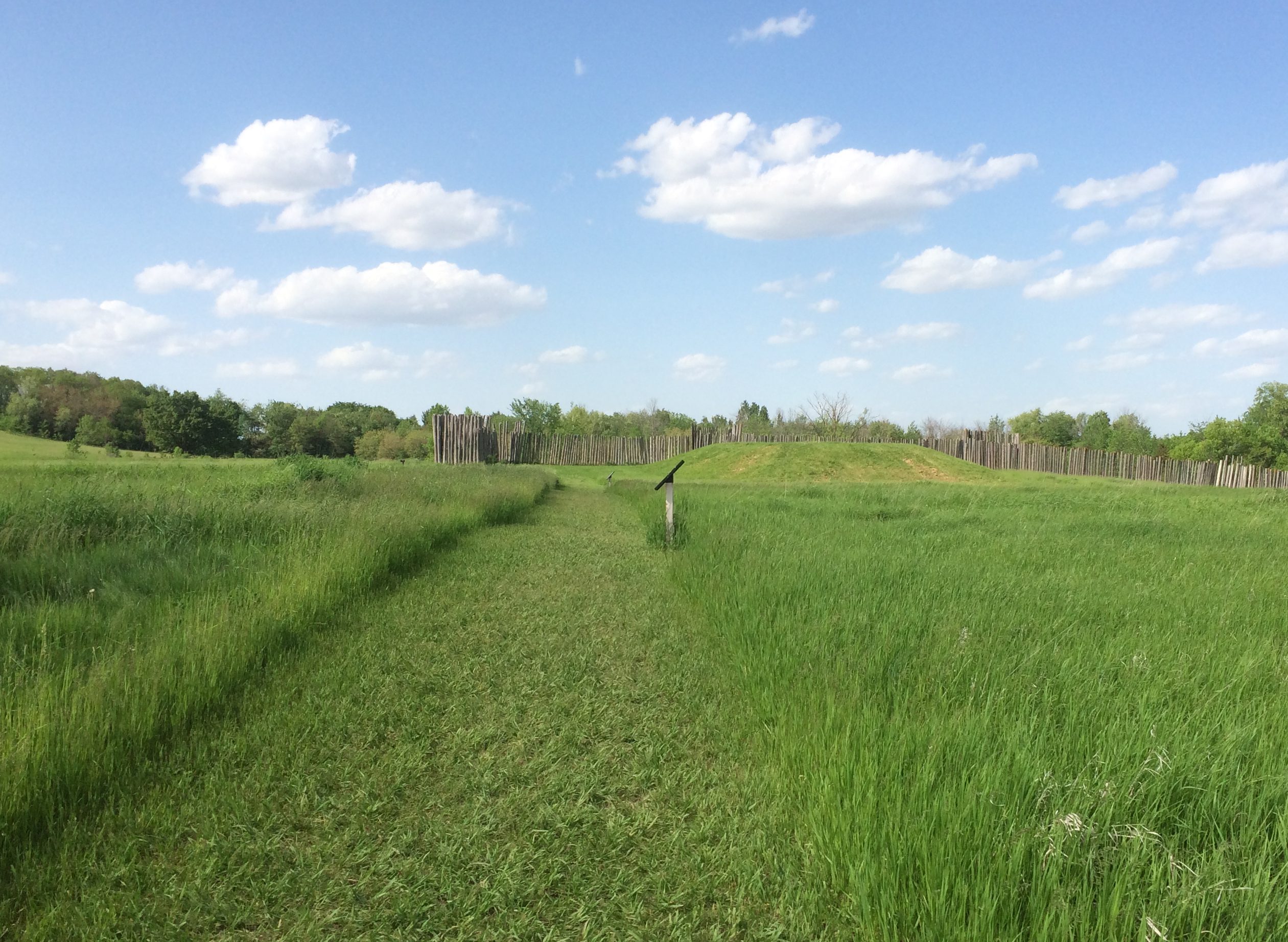 Another path leads down to the Crawfish River, which I assume supplied Aztalan with its water and some fish.
Another path leads down to the Crawfish River, which I assume supplied Aztalan with its water and some fish.
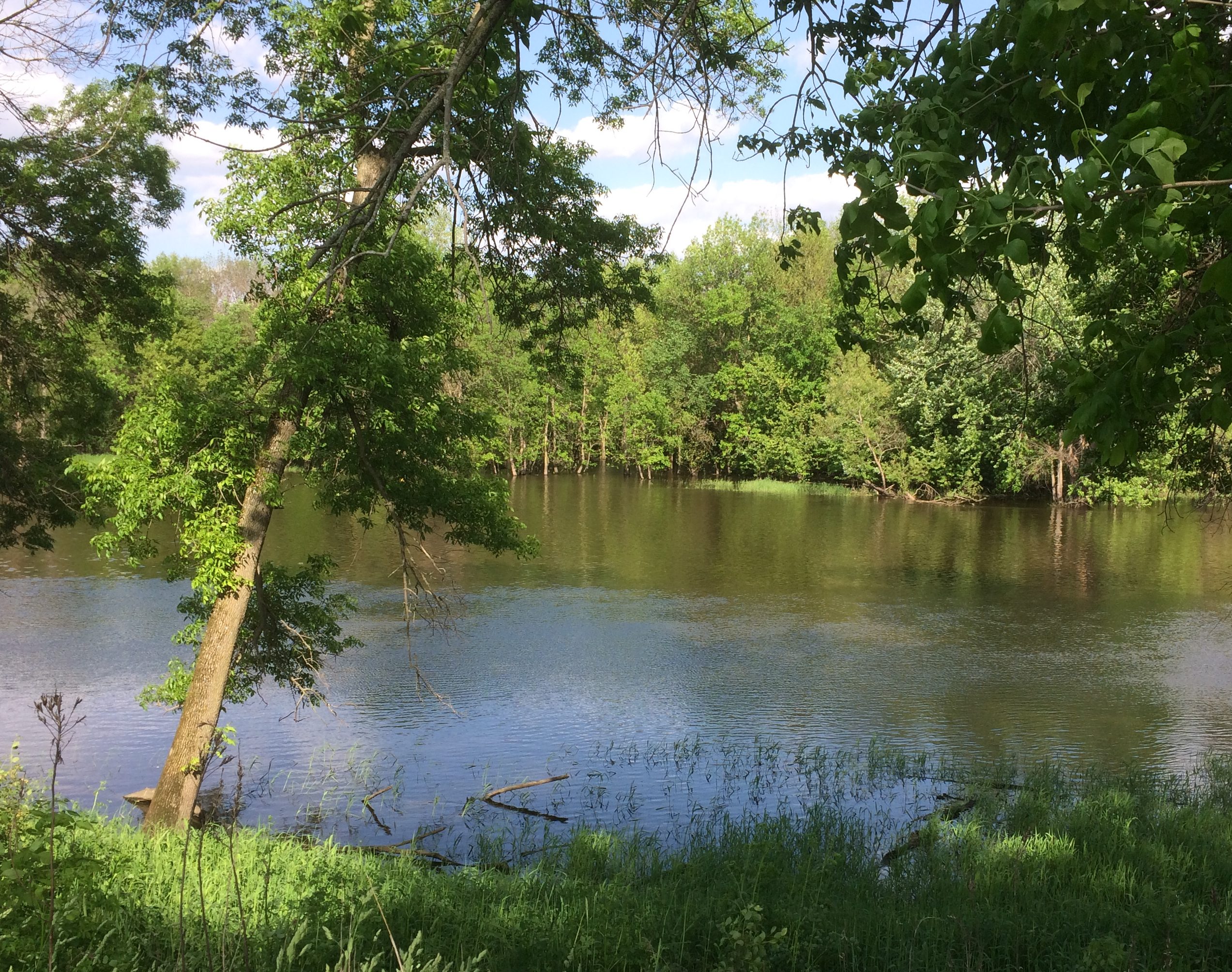
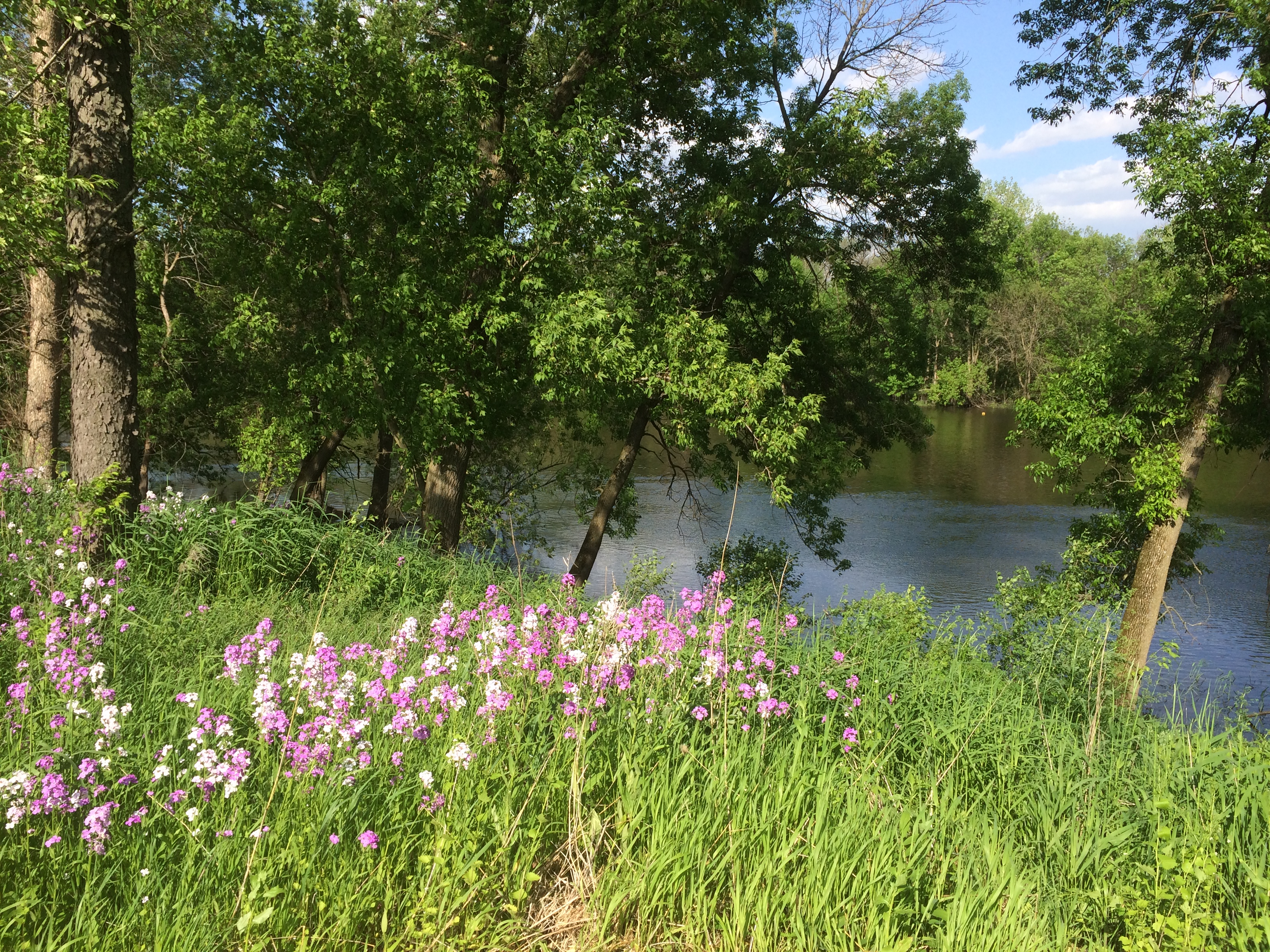 Near the river is what I take to be an active archaeological dig, complete with screens for sifting the soil.
Near the river is what I take to be an active archaeological dig, complete with screens for sifting the soil.
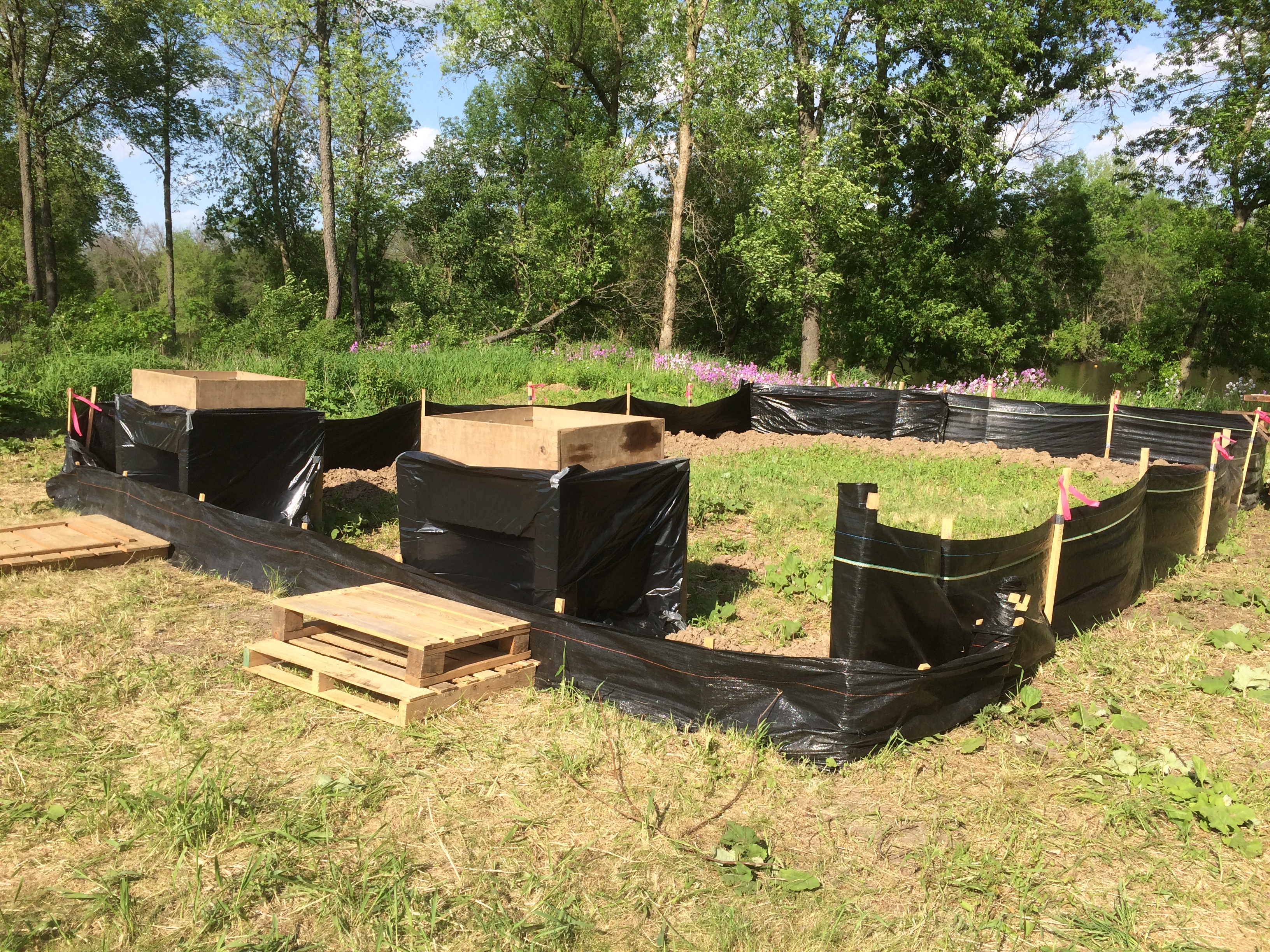 I don’t think I’d have the patience for that kind of work. But I’m glad there are people who do.
I don’t think I’d have the patience for that kind of work. But I’m glad there are people who do.